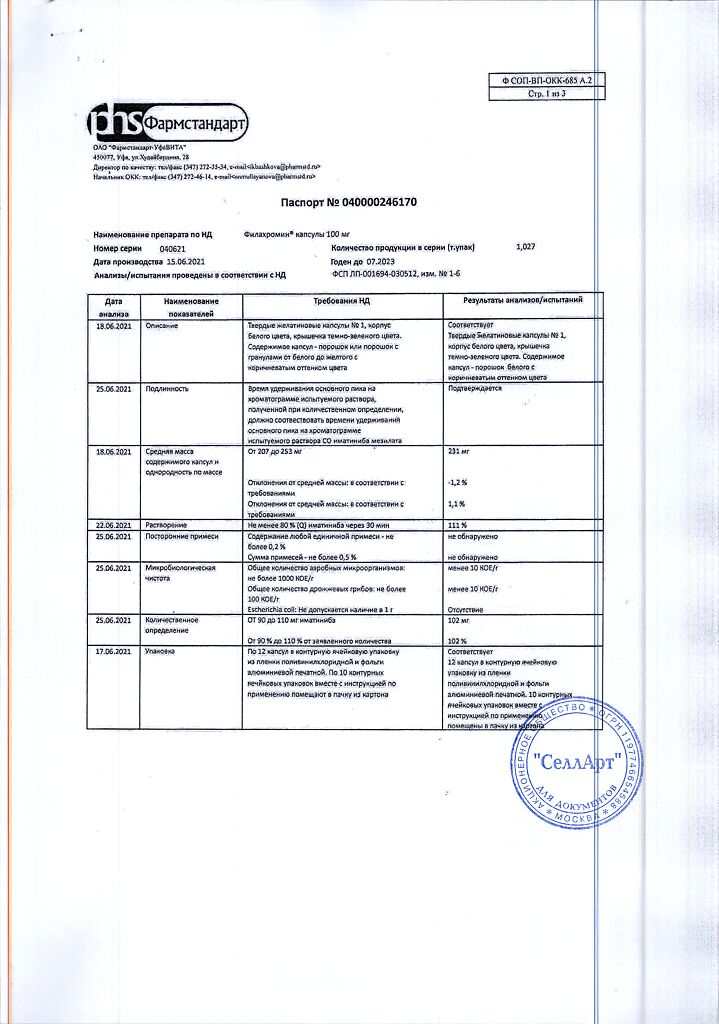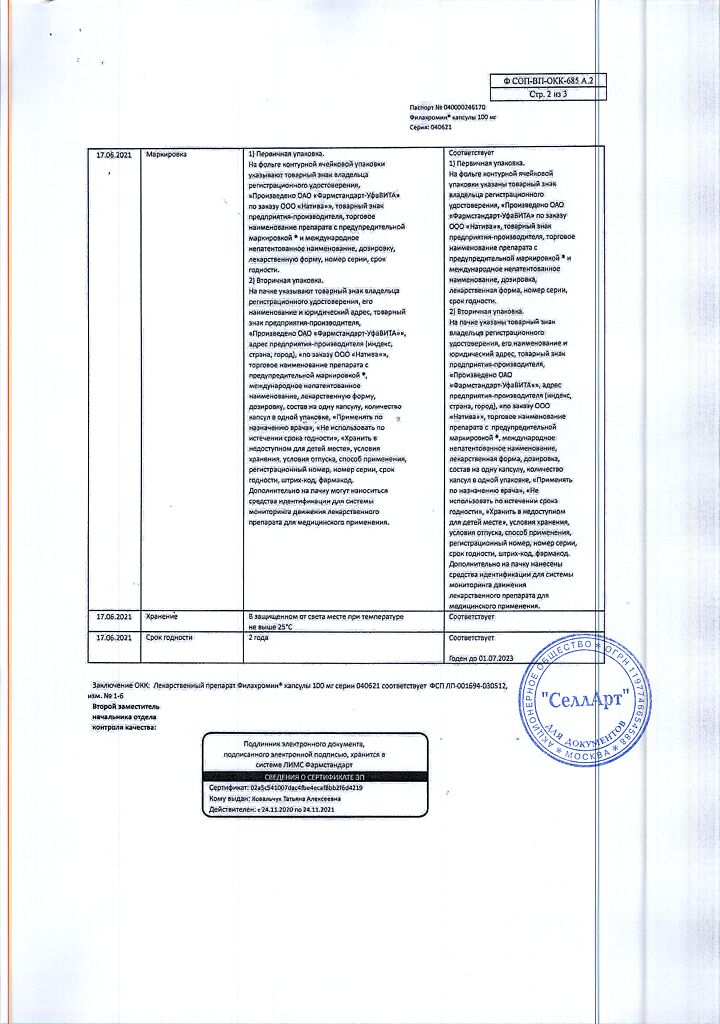No products in the cart.
Description
Imatinib selectively inhibits the enzyme Veg-Abl-tyrosine kinase, which is formed by the fusion of the Veg gene region (breakpoint cluster region) and the Abl (Abelson) protooncogene at the cellular level.
Imatinib selectively inhibits proliferation and causes apoptosis of cell lines expressing Veg-Abl tyrosine kinase as well as immature leukemia cells in chronic myeloleukemia with a positive Philadelphia chromosome and in acute lymphoblastic leukemia. In patients with chronic myeloleukemia imatinib selectively inhibits Veg-Abl-positive colonies and has antitumor activity in monotherapy.
Imatinib selectively inhibits Veg-Abl-positive colonies derived from blood cells of chronic myeloleukemia patients.
The activation of receptors to platelet-derived growth factor or Abl-fragment tyrosine kinase may be responsible for the development of both myelodysplastic/myeloproliferative diseases as well as hypereosinophilic syndrome and chronic eosinophilic leukemia and bulging dermatofibrosarcoma.
The activation of the c-Kit receptor tyrosine kinase and receptors to platelet growth factors may underlie the pathogenesis of systemic mastocytosis.
Imatinib inhibits cell signaling and cell proliferation resulting from dysregulation of platelet and stem cell growth factor activity, c-Kit receptor and Abl-fragment tyrosine kinase.
Imatinib inhibits proliferation and induces apoptosis of gastrointestinal stromal tumor cells expressing tyrosine kinase with a c-Kit receptor mutation.
Indications
Indications
Active ingredient
Active ingredient
Composition
Composition
How to take, the dosage
How to take, the dosage
Recommended daily dose of filachromine in remission stage is 400 mg, in acute stage and during blast crisis – 600 mg. The dosage may be adjusted in case of disease progression: in remission stage – up to 600 mg/day, in aggravation stage and in blast crisis – up to 800 mg/day (400 mg 2 times a day).
In case of liver function abnormalities (bilirubin concentration is increased by 3 times in comparison with the basic value, the activity of “liver” transaminases – by 5 times) the treatment is stopped, until the values decrease to 1.5 and 2.5 correspondingly. In this case, treatment is resumed, reducing doses from 400 to 300 mg and from 600 to 400 mg.
In blast crisis and in the acute stage (dosing regimen – 600 mg/day), if neutrophils decrease less than 500/μL, platelets – less than 100,000.If cytopenia is not associated with leukemia, the imatinib dose is decreased to 400 mg; if cytopenia persists for the next 2 weeks, the dose is decreased to 300 mg; if cytopenia persists for up to 4 weeks, the treatment is stopped until the blood parameters recover (neutrophils – at least 1,000/μL).
If cytopenia persists for the next 2 weeks, the dose is decreased to 300 mg/day and then resumed at a reduced dose.
Interaction
Interaction
An increase in plasma concentrations of imatinib, the main ingredient of Filacromine, is possible with concomitant use of Filacromine FS with such drugs as: ketoconazole, itraconazole, erythromycin, clarithromycin.
Decrease of the drug in plasma is possible when concomitant use with: dexamethasone, rifampicin, antiepileptic drugs such as: carbamazepine, oxcarbazepine, phenytoin, phenobarbital, phosphenytoin, primidone or drugs based on St. John’s wort.
We recommend caution when using imatinib concomitantly with the drugs cyclosporine and pimozide.
Concomitant use with warfarin may increase prothrombin time. Concomitant use with coumarin derivatives requires short-term monitoring of prothrombin time at the beginning and end of therapy with imatinib, as well as when changing the dosing regimen of imatinib. Alternatively, the use of low molecular weight heparin derivatives should be considered.
When imatinib is combined with chemotherapeutic drugs, high doses may result in transient hepatotoxicity in the form of increased liver transaminase activity and hyperbilirubinemia.
Contraindications
Contraindications
With caution
. Caution should be used with caution in patients with severe hepatic impairment, severe renal dysfunction, cardiovascular disease, or if there are risk factors for heart failure, and if regular hemodialysis procedures are performed.
Side effects
Side effects
When taking the drug, the following unwanted effects on organs and systems are possible:
The onset of nausea, vomiting, disorders of liver function (increased activity of “hepatic” transaminases and ALP, hyperbilirubinemia).
Neutropenia, thrombocytopenia, anemia, pancytopenia.
Liquid retention in the body – weight gain, superficial edema, local or widespread edema, pleural and/or pericardial effusion, ascites, pulmonary edema, periorbital edema, less often – of the extremities, renal dysfunction.
CRC.
Muscular spasm.
Additional information
| Manufacturer | Nativa, Russia |
|---|---|
| Medication form | capsules |
| Brand | Nativa |
Related products
Buy Filachromine, capsules 100 mg 120 pcs with delivery to USA, UK, Europe and over 120 other countries.





















